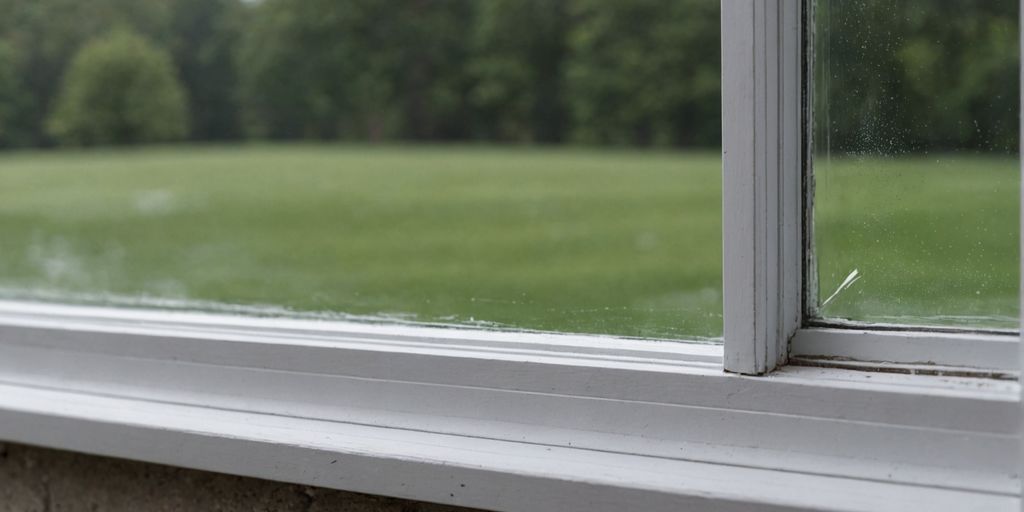
The Ultimate Guide to Choosing the Best Window Seal
Picking the right window seal is key to keeping your home cozy and energy-efficient. This guide will help you understand the importance of window seals, the different types available, and how to choose the best one for your needs.
Key Takeaways
- Proper window sealing prevents drafts and saves on energy bills.
- There are various types of window seals, including silicone, polyurethane, acrylic, and hybrid seals.
- Factors like durability, flexibility, and UV resistance are crucial when selecting a window seal.
- Installing window seals involves steps like surface preparation, applying the sealant, and ensuring a tight seal.
- Regular maintenance and timely replacement of window seals can extend their lifespan and effectiveness.
Understanding the Importance of Window Seals
What Are Window Seals?
Window seals are materials used to close gaps around windows, preventing air, water, and dust from entering your home. They are essential for maintaining a comfortable indoor environment and protecting your home from the elements.
Benefits of Proper Window Sealing
Proper window sealing offers several benefits:
- Energy Efficiency: Sealing your windows can significantly reduce heating and cooling costs by preventing drafts and maintaining a stable indoor temperature.
- Enhanced Comfort: By keeping out drafts, window seals help maintain a consistent indoor climate, making your home more comfortable year-round.
- Protection: Window seals protect your home from water damage, dust, and pests, ensuring a cleaner and safer living environment.
With proper insulation in place, you can save money on energy usage while enjoying a more comfortable and efficient home.
Common Issues with Poor Sealing
Poor window sealing can lead to several problems:
- Drafts: Gaps in window seals can let in cold air during winter and hot air during summer, making your home uncomfortable and increasing energy bills.
- Moisture Intrusion: Water can seep through poorly sealed windows, causing damage to walls, floors, and furniture.
- Pest Entry: Insects and other pests can enter your home through gaps in window seals, leading to infestations.
Types of Window Seals
Silicone Seals
Silicone seals are known for their flexibility and durability. They can handle extreme temperatures and UV rays, making them perfect for outdoor use. However, they can't be painted, which might limit their use in some cases.
Polyurethane Seals
Polyurethane seals offer a good mix of strength and flexibility. They can be painted, which is great for matching the sealant to your window frames. These seals work well with many materials and are often used both inside and outside.
Acrylic Seals
Acrylic seals are easy to apply and clean up. They are less flexible than silicone or polyurethane seals but can be painted, making them suitable for indoor use. They are a good option for quick fixes and minor repairs.
Hybrid Seals
Hybrid seals combine the best features of silicone and polyurethane seals. They offer excellent adhesion, flexibility, and are paintable, making them a versatile choice for various applications. These seals are ideal for those looking for a balance between durability and looks.
For the best results, choose the type of weather seal that matches your specific needs and window type. This will ensure maximum efficiency and comfort in your home.
Factors to Consider When Choosing a Window Seal
Durability and Longevity
When picking a window seal, durability is key. You want a seal that can handle the elements and last for years. Silicone and hybrid seals are often the most durable options available.
Flexibility and Movement
Window seals need to move with your window frames. Silicone and polyurethane seals offer the best flexibility, ensuring that your windows can open and close smoothly without compromising the seal.
UV and Weather Resistance
If your windows get a lot of sunlight, UV resistance is crucial. Silicone and hybrid seals perform well under UV exposure, preventing degradation over time. Additionally, consider the local weather conditions. If you experience extreme temperatures or frequent precipitation, choose a seal that can handle these conditions.
For the best results, choose the type of weather seal that matches your specific needs and window type. This will ensure maximum efficiency and comfort in your home.
Step-by-Step Guide to Installing Window Seals
Preparing the Surface
Before you start, make sure the area where you'll apply the sealant is clean and dry. Remove any old adhesive or debris. A clean surface ensures the new sealant adheres properly.
Applying the Sealant
- Cut the tip of the sealant tube at a 45-degree angle.
- Load the tube into a caulking gun.
- Apply a steady bead of sealant along the edge of the window frame.
- Smooth the sealant with a caulk smoothing tool or your finger.
Ensuring a Proper Seal
After applying the sealant, check for any gaps or uneven areas. A proper seal will keep out water, dust, and extreme temperatures. If needed, apply additional sealant to cover any missed spots.
Proper installation of window seals can significantly improve your home's energy efficiency and comfort. Take your time to ensure a thorough job.
Tools and Materials Needed
- Caulking gun
- Sealant tube
- Utility knife
- Caulk smoothing tool
- Cleaning supplies
DIY vs. Professional Installation
Pros and Cons of DIY
Doing it yourself can save money, but it requires time and attention to detail. Mistakes can lead to more costs down the line.
When to Hire a Professional
If you’re unsure about the process or dealing with extensive damage, hiring a professional ensures the job is done correctly.
Properly sealing your windows can significantly lower your energy expenses by sealing gaps around windows and doors.
CONCLUSION
Choosing the right window seal is essential for keeping your home comfortable and energy-efficient. By understanding the different
types of sealants and their benefits, you can make an informed decision that suits your specific needs. Whether you decide to
tackle the project yourself or hire a professional, ensuring a proper seal can save you from future problems and expenses.
Remember, a well-sealed window not only protects against the elements but also enhances the overall comfort and value of your
home. Happy sealing!
FREQUENTLY ASKED QUESTIONS
WHAT ARE WINDOW SEALS?
Window seals are materials used to close gaps around windows to prevent air, water, and noise from entering or escaping. They help
keep your home comfortable and energy-efficient.
WHY ARE WINDOW SEALS IMPORTANT?
Maintaining and Replacing Window Seals
Signs Your Window Seals Need Replacement
It's crucial to know when your window seals need replacing. Drafty windows are a clear sign. If you feel a breeze even when your windows are closed, it's time to check the seals. Look for visible gaps or cracks around the window frames. Moisture between window panes or pests inside your home are also indicators that your seals are failing.
How to Remove Old Sealant
Removing old sealant is a crucial step before applying new seals. Follow these steps:
- Use a utility knife to cut through the old sealant.
- Carefully peel away the old sealant, making sure not to damage the window frame.
- Clean the area thoroughly to remove any residue.
Tips for Longevity and Maintenance
To keep your window seals in good condition, regular maintenance is key. Inspect your seals regularly, especially before winter and summer. Reapply caulk and seals as needed. Weather stripping can also help maintain a tight seal. For sliding glass door track repair parts, ensure the tracks are clean and free of debris.
Regular maintenance can extend the life of your window seals and improve your home's energy efficiency.
Keep an eye on your window screen repair parts and replacement parts for 1984 Anderson casement windows to ensure they are in good condition. Regularly check your window weather stripping and weatherstripping for doors to prevent drafts and maintain comfort in your home.
Environmental and Cost Considerations
Eco-Friendly Sealant Options
Choosing eco-friendly sealants can make a big difference for the environment. These sealants are made with fewer harmful chemicals, making them safer for both your home and the planet. They also help improve indoor air quality, which is a bonus for your family's health.
Cost-Benefit Analysis
When comparing prices, it's important to look at both the initial cost and the long-term benefits. Sometimes, a mid-range option can offer the best balance of quality and cost. Here's a simple table to help you compare:
| Option | Initial Cost | Long-Term Savings |
|---|---|---|
| Low-End | Low | Low |
| Mid-Range | Medium | High |
| High-End | High | Very High |
Properly sealing your windows can significantly lower your energy expenses by sealing gaps around windows and doors.
Conclusion
Choosing the best window seal is key to keeping your home cozy and energy-efficient. By understanding the different types of seals and their benefits, you can make a smart choice that fits your needs. Whether you go for silicone, polyurethane, acrylic, or a hybrid, each has its own perks. Remember, a good seal not only keeps out drafts and moisture but also saves you money on energy bills. Regular checks and maintenance can help your seals last longer and keep your home in top shape. So, take your time, pick the right seal, and enjoy a more comfortable home.
Frequently Asked Questions
What are window seals?
Window seals are materials used to close gaps around windows to prevent air, water, and noise from entering or escaping. They help keep your home comfy and energy-efficient.
Why are window seals important?
Proper window seals keep out drafts, moisture, and noise. This can lower your energy bills, stop water damage, and make your home more comfortable.
What types of window seals are there?
There are several types, including silicone, polyurethane, acrylic, and hybrid seals. Each type has its own benefits and is good for different situations.
How do I know if my window seals need to be replaced?
You might need to replace your window seals if you notice drafts, condensation between window panes, or visible cracks and gaps in the sealant.
Can I replace window seals myself?
Yes, you can replace window seals yourself by following a step-by-step guide. But if you're not comfortable doing it, you can hire a professional.
How often should window seals be checked or replaced?
You should inspect your window seals regularly, especially before extreme weather seasons. Typically, seals may need to be replaced every 5 to 10 years, depending on the material and conditions.
